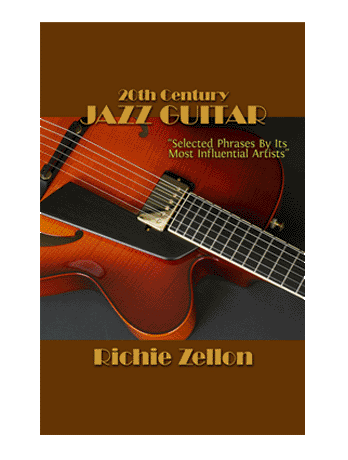Part 2: “Transcribing” versus “Writing”
To Part 3: Procedure
The following is a transcription of Part 2:
I previously implied that learning a phrase and not playing it in the proper context within a piece of music, is not a good thing. Therefore I’d like to address this issue first in order to avoid any misunderstandings down the road. One of the great teachers I had the opportunity to study with was the late Charlie Banacos. For those not familiar with him, among his most celebrated students are Mike Stern, Jeff Berlin, Michael Brecker and Danilo Perez just to name a few. Banacos taught me the importance of not only transcribing but also writing out solos. When you transcribe a complete chorus of a solo, you get to both analyze and learn how a master improviser develops his ideas within the context of the whole tune’s chord progression. When you write out your own solo, you have the opportunity to gradually develop your own ideas as well as your own style within that same chord progression. In addition, you have the opportunity to include selected ideas from solos you have transcribed. Both transcribing and writing are important and complement each other in terms of furthering your ability to improvise.
In the case of this series, I am offering you a handful of ready to play transcriptions. These are not fully transcribed solos but instead short phrases over the cadences that are found in most jazz standards. Therefore we must take an extra step before we can use them in our repertoire. This is where the writing of a full solo comes into play.
When we write out an original solo we draw from all our influences. Our musical thoughts are shaped by all the music we have played and listened to throughout our entire lives. This especially includes any transcriptions that we’ve played over because in doing so; we have created a mental model of how a smooth melodic line is developed over a set of given chords. So at the time of organizing our thoughts on paper by first writing a solo, we should include phrases from different transcriptions in conjunction with other ideas we want to program into our vocabulary. For centuries classical musicians have written “etudes”. The word “etude” means “study” and refers to a piece written with the purpose of mastering a specific musical technique. This can include anything from playing arpeggios in a given minor key, to mastering the use of dynamics on your instrument. In jazz we often write etudes or solos with the end of learning how to improvise over different harmonic progressions.
My mentor would have me not only transcribe but also write several solos using specific ideas over a given standard. By playing these solos for a period of time, portions of them became programmed into my subconscious mind. Several months later when attempting to improvise over said standard, the ideas from the different solos I wrote and practiced, spontaneously came to mind thus shaping the direction of my improvised solo. This is a slow but natural process such as that of learning a new language. In conclusion, we first have to acquire a vocabulary and program our brains how to use it in the context of different progressions. As a result when we improvise we’ll have a storehouse of ideas that we can draw from subconsciously.
If you follow the proper procedure, this series is ideal for the process described because it includes a variety of phrases by the foremost jazz guitarists of each era… from swing to be-bop to post bop! In the long run this is meant to give you a well rounded education of what a well constructed jazz line is. Of course, you can and should supplement this with other transcriptions and ideas. The more the merrier!

If i purchase the be bop series, can i also access the other lessons such as the rhythm section?
Is the fee a one time fee, say the $87 series. Is that a one time fee or is it reacurring.?
Hi William,
It’s a one time fee and you can access everything!